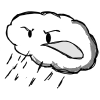Ottostrom wrote:selig wrote:Creativemind wrote:
When would the activity under 50 or 20hz be useful to leave in?
When there's nothing there in the first place! In many cases there's nothing there, so the idea of cutting everything doesn't make sense to me.
But that would not be "useful" to leave in, it would just not make a difference. I know it would save time not to highpass everything (even though it only takes a few seconds) but I think the question here is: when would you want the activity that is there WHEN there is something? What benefit would it bring to the mix?
I often find myself asking the question the other way around - what detriment is it to the mix? If there's no detriment, and there often isn't, why take it out? There are many factors that would determine this - the level of the LF energy, the frequency, the correlation (is it a part of the sound or background noise?), etc. For some sounds it can add extra 'heft', especially in a more open and acoustic mix.
My reasoning is that filters cost DSP, and there is no free lunch - filters aren't magical and DO have side-effects. Again, less is more: when in doubt, leave it out. Not trying to change anyone's mind, knock yourselves out with HP filters if it works for you. Just sharing what works for me!

Sent from my iPad using Tapatalk



